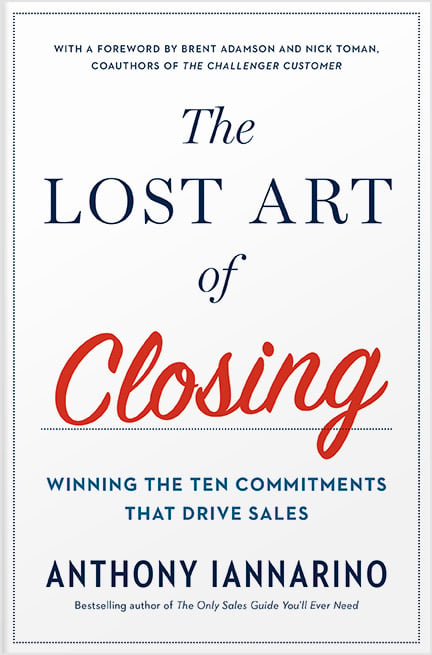Sales is a contest, a competition. Because this is true, selling is about creating a preference to work with you, your company, and your solution. The greater the preference you create, the more likely you are to win. For our purposes, we are going to substitute the word “preference.” It might be a bit too nebulous, so we’ll substitute if for the provocative term “popular.”
How Popular Are You with Your Contacts?
Do the contacts within your dream client have a strong affinity for you as their sales rep? All things being equal, would they prefer to buy from you instead of your competitors?
For you to be popular with your clients, they would have to know you, like you, trust you, and you would also have to create value that includes better business results. Were you to decide how to improve your popularity among the contacts you are calling on, you could do no better than to schedule face-to-face meetings.
If those meetings find you inside the four walls of your prospective client’s building, your showing up is an indication that you believe they are important enough to command your time and attention, differentiating you from anyone who takes a more transactional view.
Your contacts watch you listen to them. Take notes. Confirm your understanding, and ask good questions. Doing these things improves your popularity. Deepening your understanding of who your contacts are, what they need, how they view their challenges, problems, and opportunities also improve your standing.
Being physically present for meetings provide an advantage of those who try to be more efficient when they should be more concerned with being effective. Your presence will improve your popularity.
How Popular Is Your Approach?
Your consultative sales approach is one of the primary ways you created value for your prospective clients, or it is the way you waste their time. Your method exists somewhere on this continuum.
One of the ways you increase your popularity is by recognizing where your contacts are in their decision. Recognize what they need from you, and provide it to them throughout the sales conversation. If you realize they are experiencing dissonance and struggling to understand their world and the root cause of their challenges, helping them understand and make sense of things is value. In larger, complex, B2B sales, you are providing a process that helps them understand their choices and make the right decision is also value.
In The Lost Art of Closing, there is a chapter on Controlling the Process, one of the two rules that begin the book, the other being the Trading Value rule (see this video for more). Some believed the language to be too strong, but it isn’t. Instead, it’s consultative.No more pushy sales tactics. The Lost Art of Closing shows you how to proactively lead your customer and close your sales. 
You have considerably more experience by the nature of having sold what you sell more often and across more companies and industries. You help your client by helping them with the conversations and commitments necessary to better results.
Your popularity rises when you exercise an approach that serves your contacts and their company where you find them. You are not going to be favored by complying with a request to send a proposal and pricing by email.
How Popular Is Your Solution?
Ultimately, you are going to ask your potential customer to buy your solution. Your solution is also going to need to be more popular than competitive solutions. The solution is your advice, which means you are responsible for the popularity of the solution you propose.
Salespeople who provide one solution without collaborating and making adjustments to the solution or customizing it to better fit what their client needs often end up with a solution that is easy for their prospect to reject. It isn’t “their” solution as much as it is the salesperson’s and their company’s solution.
One of the ways you improve the popularity of your solution is through your consultative selling approach. The more collaborative the approach, the higher your odds of developing a solution that fits your prospective client. The more you build consensus around the solution through the sales cycle, the more significant support you will have when your client decides to move forward with you or your competition.
I am guilty of writing about the responsibilities of the salesperson because you are ultimately responsible for your wins and your losses. The control you have over your solution comes down to your ability to collaborate. You need to make it “our solution,” so you and your client both own it.
How Popular Is the Idea of Working with You?
In the end, your B2B buyer is going to decide whether they want to work with you or your competitors. This is the nature of the decision you are asking them to take when you ask for their business.
You may or may not have the support you need at the end of the sales conversation you’ve had with your dream client. Your competition will find themselves in the very same position. You never want to work from behind the process, approaching your work in sales as something that isn’t about creating enough value that your contacts prefer to work with you. Creating a preference is much harder later in the sales conversation than earlier, once they’ve agreed on a purchase decision.
The long trend towards a desire for greater consensus means that at some point, people are going to raise their hand in favor of one salesperson, their company, and their solution. You may not want to think of deal as a popularity contest, even though that is what it is. Your prospects are measuring your performance and deciding who they choose as a partner.

Get the Free eBook!
Learn how to sell without a sales manager. Download my free eBook!
You need to make sales. You need help now. We’ve got you covered. This eBook will help you Seize Your Sales Destiny, with or without a manager.
Download Now







.jpg?width=768&height=994&name=salescall-planner-ebook-v3-1-cover%20(1).jpg)


